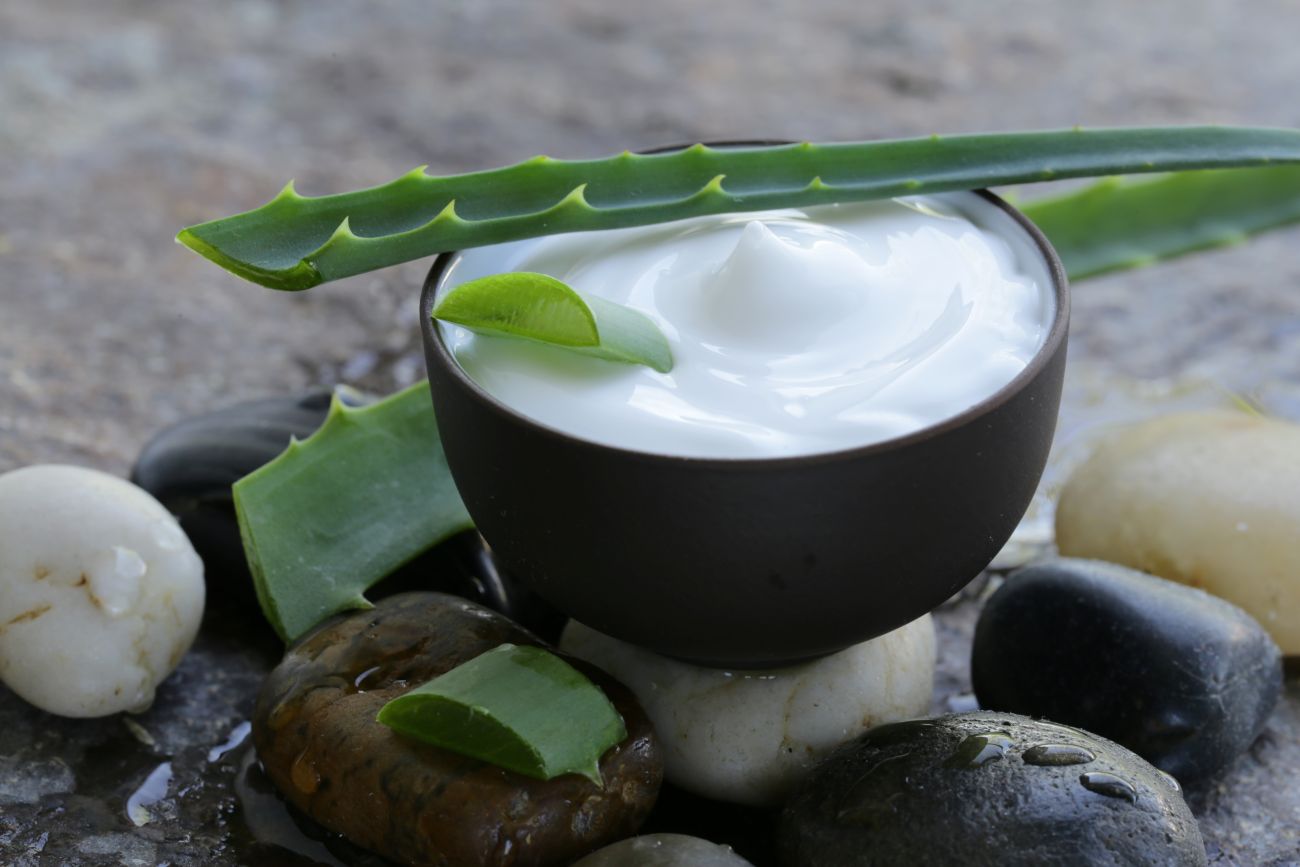Suffering from psoriasis can be a frustrating and isolating experience. The itchy, red, scaly patches seem to crop up without warning and dealing with them makes many people self-conscious.
Although psoriasis is caused by complex immune system issues, there are ways that we can use our habits and lifestyle to make outbreaks less frequent and intense when they do occur.
 Dream79 / Shutterstock
Dream79 / ShutterstockWhat Are the Symptoms of Psoriasis?
There are many different types of psoriasis. Each of which has a unique look and different triggers.
Typically, the psoriasis rash is red and scaly, which appears on the scalp, face, hands, feet, and groin. Guttate psoriasis often appears in children and younger adults. Instead of being patchy, the rash is made up of small red dots. Inverse psoriasis is red and shiny, but it appears in warm, close areas of the body like the armpits.
Psoriasis goes through cycles, which means that it can flare up, then subside. Sometimes, people experience complete remission.1
Things to Avoid
If you’ve had psoriasis for a while now, you may be able to identify some behaviors or habits that trigger your outbreaks.
To help, here are some of the most common psoriasis triggers.
Stress
One of the most common triggers for psoriasis is stress. That’s because one of our body’s primary responses to stress is inflammation.
Since people with psoriasis already have an immune system that’s over-responsive, maintaining calm is key for people with this condition.2
Smoking
Multiple studies have found a strong correlation between regular smoking and psoriasis. One estimates that smoking doubles your risk of developing this condition. This is because nicotine affects our immune system and skin cell growth.
Smoking is also associated with poor stress management, another major psoriasis trigger.3
Skin Injuries
Skin injuries from intense sunburns or irritations, such as mosquito bites or poison ivy rashes, can trigger a psoriasis outbreak. This reaction to irritation is due to a response called the Koebner phenomenon. Doctors aren’t sure why this occurs, but it’s a common response that affects people with psoriasis, as well as other skin conditions like vitiligo and warts.4
Effective Treatments
Although psoriasis can be irritating, it often improves with treatment. There are many different treatment options for mild to severe psoriasis.
Here are some that are often prescribed to patients.
Steroid-Based Creams
The most typical treatment prescribed for people with psoriasis is steroid-based creams. These creams help to limit inflammation and slow down the over-production of cells that leads to the red, scaly patches on the skin. Moreover, they help to soothe irritation and dryness.
If you’re prescribed one of these creams, make sure you use it exactly how your doctor prescribes. Don’t skip applications or use it on other areas of your body.5
Coal Tar
Coal tar is another topical treatment for psoriasis that many people use with great success. However, it has an unpleasant smell and can be very messy to use. As such, make sure to cover the affected area with plastic wrap or a rag to avoid it smearing on your clothing.
Although coal tar ointments and creams used to be very popular, their popularity has declined in favor of prescription medications.6
Medications
There are a number of different oral or injectable medications that can be used by patients with psoriasis.
Oral retinoids and biologics are the two most popular categories of oral psoriasis medications. They can both be extremely effective in removing the psoriasis rash and slowing the over-production of cells, but they tend to be quite expensive. They also have several side effects that range from an increased risk for birth defects to infections, hair loss, and bone pain.7
Natural Light Therapy
If you have mild psoriasis, your doctor may recommend natural light therapy. This involves you going outside at certain times of the day and exposing your skin to the sun’s rays.
As long as you don’t injure your skin further by getting a sunburn, light therapy can be beneficial to people with psoriasis.8
Narrow-band UVB Therapy
If you have more severe psoriasis, your doctor may recommend a more intense form of light therapy.
Narrow-band UVB therapy uses a special ultraviolet light machine that patients are placed in between two to five times per week. The practitioner exposes the patient’s body to intense UVB light for a short period of time.
Typically, people with psoriasis need between five and 10 treatments to see visible results.9
Natural Remedies
If you’re unhappy with the results you’re getting from more traditional psoriasis treatments, talk to your doctor about natural alternatives.
Apple Cider Vinegar
Apple cider vinegar has a ton of uses in natural healing and has been used for centuries as a disinfectant.
For psoriasis, it can help improve itchy, irritated skin, especially if you have an outbreak on your scalp. Rinse your head with pure apple cider vinegar or cut it 50/50 with water if you’re nervous about the intensity. Let it sit for a few minutes, then rinse it off. Don’t use it if your rash is cracked or bleeding as it will sting like crazy.10
Aloe Vera
Aloe vera is a really useful plant. In fact, the contents of the wide, fleshy leaves are wonderfully soothing on the skin. In addition to soothing itch, it keeps skin hydrated, which will limit cracking and bleeding.
You can either buy a plant and prepare the aloe vera gel yourself or use a commercial cream or gel. Make sure you buy products that have at least 0.5 percent pure aloe vera, otherwise you may irritate your already sensitive skin.
Dead Sea Salts
Dead Sea salts are salts and mineral deposits taken out of the Dead Sea. Although a bag of it may look similar to salt that comes from the ocean, it has a completely unique chemical makeup.
Use Dead Sea salt to make a soothing bath if you have a psoriasis flare-up. Soak for 15 to 20 minutes, then apply lotion or cream to your skin immediately after you get out of the bath to lock in the moisture.
Oats
Oats don’t just taste good — they’re incredibly soothing to the skin.
If you’re having a really itchy, irritated flare-up, run a bath of warm water and add in a handful of finely ground oatmeal. The oatmeal will reduce skin swelling and limit the itching.11
Oregon Grape
Also called barberry, this Pacific Northwest plant looks more like mistletoe than a regular grape. Studies have shown that extracts from the Oregon grape can reduce redness in psoriasis flare-ups and limit inflammation.
If you want to try using an Oregon grape cream, make sure that it contains at least 10 percent Oregon grape extract in order for it to be effective.12
Turmeric
Not only can turmeric spice up a dish, but it can also help treat your psoriasis. An article on MedicalNewsToday suggests turmeric contains properties that help combat some chronic inflammatory conditions such as psoriasis.
Turmeric has a two-fold impact on psoriasis. For starters, it may inhibit the production of substances known to cause inflammation. It can also enhance the skin-barrier function by regulating certain proteins. There are oral and topical turmeric treatments available you can purchase online.¹³
Moisturizer
Something you should implement into your daily routine alongside other remedies is moisturizer. It’s a great way to maintain soft and smooth skin between psoriasis outbreaks.
MedicalNewsToday says applying a moisturizer throughout the day may help control symptoms and keep skin comfortable. Make sure to choose products that are free of fragrances and dyes. Better yet, choose ones that are labeled specifically for sensitive skin.¹⁴
Omega-3 Fatty Acids
There are many advantages to omega-3 fatty acids, one of them being skin health. MedicalNewsToday reports that it may reduce inflammation and improve autoimmune diseases. Since psoriasis is both inflammatory and autoimmune, it could be a helpful treatment.
The best way to get omega-3 fatty acid is to consume fish. Alternatively, you could also take fish oil supplements. Just make sure to follow the dosage instructions and talk to your doctor beforehand since there are potential side effects.
Capsaicin Cream
Capsaicin is an ingredient that makes chilli peppers hot, and it could also potentially help treat your psoriasis. WebMD says capsaicin can help cut pain, inflammation and redness. It can be found in over-the-counter creams, and could be worth a try if regular moisturizer isn’t getting the job done.
Be careful before applying a large amount of capsaicin cream for the first time. Some people experience a burning sensation when putting it on their skin, so test it on a small area of skin first.15
Conclusion
Usually, no harm comes from trying out natural remedies for psoriasis. Just make sure that you’re honest with your doctor about what you’re doing. They may have some tips for remedies that have worked for their other patients.
Learn what works for your body and you’ll be able to reduce outbreaks and flare-ups in no time.


